Sunday Science: All Seeing Eye
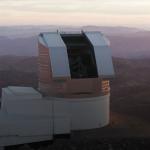
Cerro Pachón in Chile—You can tell the giant telescope is built for speed. The steel mount that holds the mirrors is squat and stout but also lightweight, so it can move fast and stop quickly. A bank of heavy-duty capacitors below the mount is poised to deliver a powerful impetus to motors that swivel the telescope. The camera at its heart is fast, too, capable of spitting out a 3200-megapixel image from each exposure in less than 3 seconds.
On a typically clear, bone-dry day here at 2650 meters, the Vera C. Rubin Observatory is limbering up inside its sleek enclosure, which looks more like a Bond villain’s lair than a science facility. Operators had locked down the telescope for several days while engineers worked on a glitch in the camera’s cooling system. Today, 10 May, they decide it is safe to proceed, and commissioning scientist Kevin Fanning prepares to take his 350-ton baby out for a spin.
At the press of a button on his laptop, the towering structure begins to move and is soon rotating effortlessly on a thin film of oil. Motors quietly whine as the telescope’s cyclops eye tilts up and down and the dome turns. The movement is all so smooth it’s impossible to tell what’s spinning—the telescope or the surrounding platform on which Fanning and others stand. The test drive shows off just 20% of Rubin’s maximum speed. At full tilt, a runner wouldn’t be able to keep up.
Rubin needs to be fast because it must cover a lot of sky—all of it. Unlike most telescopes, which zoom in on particular objects, Rubin will march relentlessly across the firmament, capturing swaths in a field of view that covers the equivalent of 45 full Moons. At each stop its 3-ton, car-size camera will record the view with an array of 189 light sensors cooled to –100°C, producing an image so rich it would take a wall of 400 ultrahigh-definition TV screens to display it in full. Each snapshot takes 30 seconds; then the telescope slews in less than 5 seconds to a new vista. In this way, it will build up a patchwork picture of the entire sky visible from Chile in just 3 days before starting all over again. The panoramas will gradually grow into a time-lapse movie of the universe.
By comparing each new image in that movie with what has come before, Rubin will detect everything that has moved, changed brightness, or suddenly appeared. Within 1 minute of dispatching an image, Rubin’s processing center at the SLAC National Accelerator Laboratory in California will generate alerts for each new “transient”—as many as 10 million every night. Some will be close to home, in the Solar System: millions of new asteroids and other objects—and perhaps even the elusive Planet 9, a hypothetical planet beyond Neptune. (The alert system will try to exclude streaks left by growing fleets of satellites orbiting Earth [see sidebar, below].)
Farther out, in and around the Milky Way, each Rubin snapshot will capture on average about 7200 variable stars, such as Cepheids, which are used to measure distances and probe the chemical makeup of stars. And beyond the Milky Way, Rubin will spy hundreds of thousands of cosmic cataclysms each night. They could include a giant star ending its life in a supernova blast, a huge black hole tearing apart a star that strayed too close, or two orbiting neutron stars merging in a titanic crash. “The things that are the most rare, the most unusual, the most interesting—those are the things we want to make sure that we’re able to pick out from the alert stream,” says Eric Bellm, an astronomer at the University of Washington who is Rubin’s science lead for alert production.
Rubin won’t ignore objects that persist through time. By repeatedly “stacking” images as the 10-year survey progresses, it will slowly build up the deepest and most detailed map ever made of the cosmos, including billions of galaxies, some of them shining with light that began its journey 11 billion years ago, when the universe was less than one-quarter of its current age. Astronomers will learn how those galaxies evolve and grow, and, from their distribution across time and space, infer how they are influenced by dark matter and dark energy, two mysterious substances that, though unseen, are thought to together make up 95% of the contents of the universe.
The vast archive, growing by 20 terabytes each night, will after 1 year contain more optical astronomy data than that produced by all previous telescopes combined.
This epic survey is scheduled to begin in about 6 months. In the meantime, Rubin staff are practicing the steps needed to produce images all night, every night for the next 10 years. The first test images will be revealed to the public on 23 June. But crews are still tinkering. That day in May, technicians clambered over the enormous structure in hardhats and reflective vests, sometimes using retractable platforms to reach the giant camera—the beating heart of the telescope. “We’re building the ship as we’re sailing it,” says Alysha Shugart, deputy manager of the observing specialists.
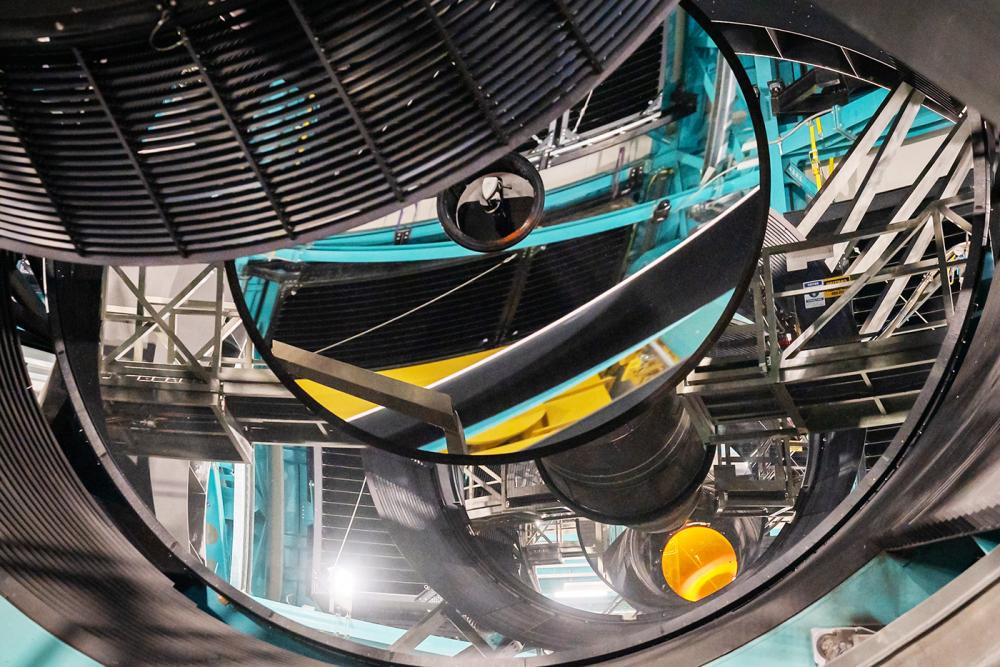
Key to the Rubin observatory’s wide field of view is an 8.4-meter main mirror in which a primary mirror forms a ring around a tertiary mirror.Aliro Pizarro Diaz
Paid for by the U.S. National Science Foundation, the Department of Energy, and private donors, the $800 million observatory is as much a data factory as a telescope. SLAC and the U.S. National Optical-Infrared Astronomy Research Laboratory (NOIRLab) have created a whole new infrastructure to handle Rubin’s deluge of images. In addition to generating the nightly transient alerts, SLAC, along with satellite centers in Europe, will clean up the images, compile data into annual releases, and make them available via an online portal to astronomers and the public in the United States as well as Canada, Chile, France, and the United Kingdom, which have made in-kind contributions to the project. “This is a survey for everyone, a single data set that serves most science problems,” says astronomer Rosaria Bonito of the Astronomical Observatory of Palermo.
Around the world, researchers have spent years developing machine learning and artificial intelligence systems to cope with the coming flood of new objects. Scores of other telescopes, some of them completely robotic, are ready to zoom in and monitor the new transients to see what they are and how they evolve. “We’ll have this data set that will give us, in addition to the things we planned for, things we didn’t plan for,” says cosmologist Renée Hložek of the University of Toronto. “You don’t know what’s going to happen until you open the box.”
Rubin chief scientist Tony Tyson, an astronomer at University of California, Davis, says the inspiration for the observatory came to him more than a quarter-century ago, when he was sitting in the control room of another telescope in Chile. At the time he worked for Bell Labs and was studying dark matter, which guides the formation of galaxies and dominates ordinary matter by a ratio of nearly six to one. So far, its nature is unknown, as researchers can only detect it through its gravitational effects.
Tyson wanted to map the distribution of dark matter from the way its gravity distorts images of more distant galaxies—a technique known as weak gravitational lensing. But the photographic plates astronomers had long used weren’t sensitive enough to see galaxies at great distances. So Tyson and others tweaked an earlier Bell Labs invention: charge-coupled devices (CCDs), semiconductor arrays that convert incoming photons into electrical charges that can be read out as an image. They built chips packing in more and more pixels until they produced one with 4 million of them, or 4 megapixels—modest for a digital camera today but a staggering figure then. By 1996, Tyson and his collaborators had built the Big Throughput Camera with four of the chips and installed it on the Víctor M. Blanco 4-meter Telescope, some 15 kilometers from where Rubin now sits.
Aerodynamic architecture
The Vera C. Rubin Observatory’s sleek building on top of Cerro Pachón in Chile minimizes air turbulence, which can disrupt viewing conditions. It contains a large hall for maintaining the camera and coating mirrors, as well as a control room, offices, and a machine shop.
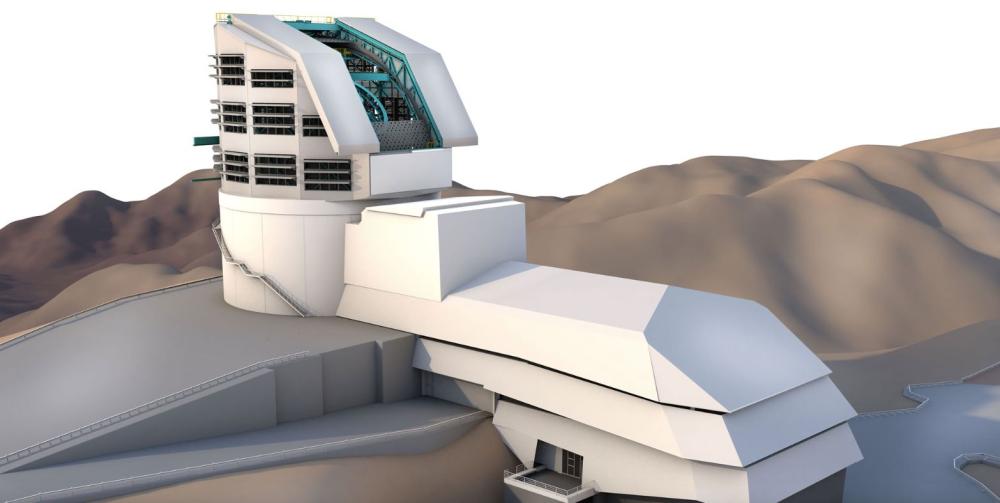
C. Bickel/Science
While in Blanco’s control room one night, Tyson says he realized the search for dark matter would be more efficient with a big wide-field telescope, capturing light from a huge swath of sky at once and focusing it onto a much larger array of CCDs. He teamed up with Roger Angel, an astrophysicist at the University of Arizona (UA) who has built mirrors for some of the world’s largest telescopes, including the Giant Magellan Telescope, a behemoth now under construction that uses seven giant mirrors as a single reflector 25.4 meters across. None of the individual mirrors are larger than 8.4 meters, because the glass from which they are made is cast and polished in a laboratory underneath UA’s football stadium that is blockaded by concrete pillars at regular intervals. “If you made [the mirror] much bigger than that you wouldn’t be able to get it out,” Angel says.
Tyson’s vision required a fast and compact telescope with a wide field of view. Angel’s solution was to use three concentrating mirrors rather than the usual two. The main 8.4-meter reflector incorporates two of them—a ring-shaped primary mirror surrounding another mirror polished to a different shape. A separate, convex mirror faces them.
A cosmic movie camera
In a 10-year survey, Rubin will repeatedly scan the entire visible sky in wide and fast exposures, gradually building up a time-lapse movie. The data should reveal the secret forces at work in the deep universe, how the Milky Way grew and evolved, and a huge new population of Solar System objects.
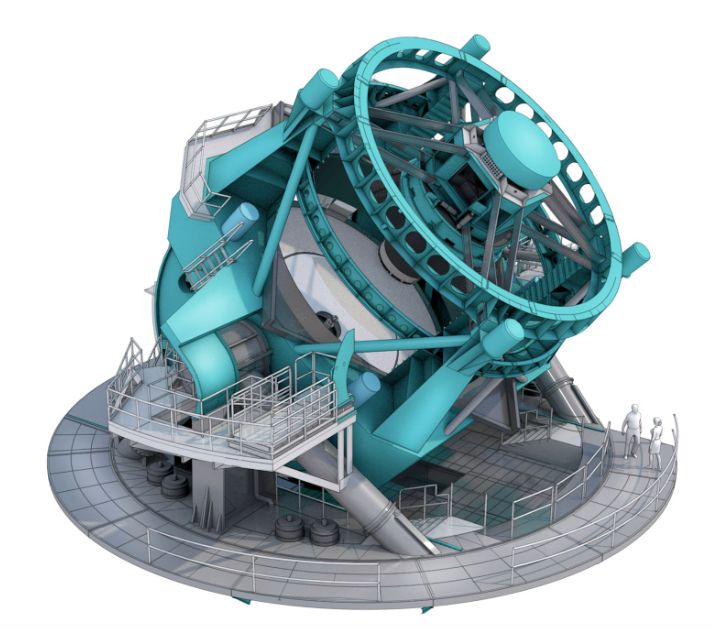
Built for speed
The telescope must snap up to 1000 images a night to capture the whole sky in 3 days. Algorithms will search for anything in the images that has changed and send out automated alerts.
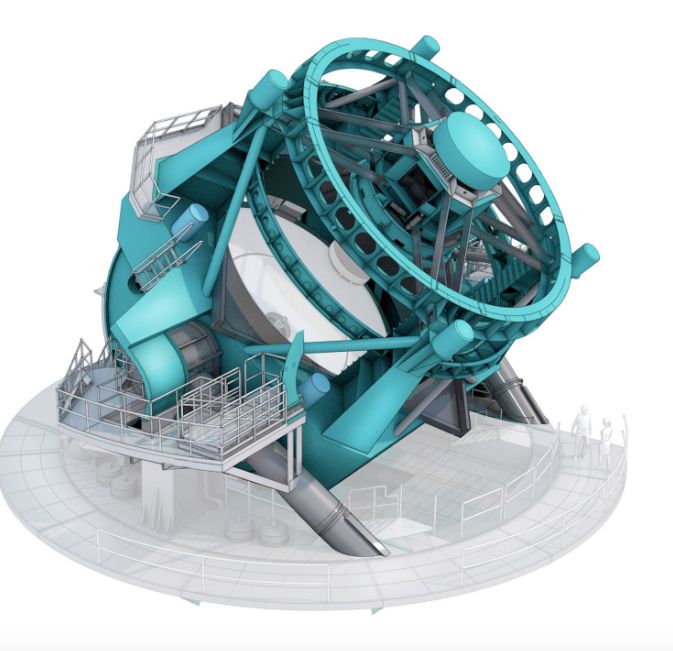
Mount
The mount for the 350-ton telescope floats on a film of oil so it can quickly spin to the next target in 5 seconds.
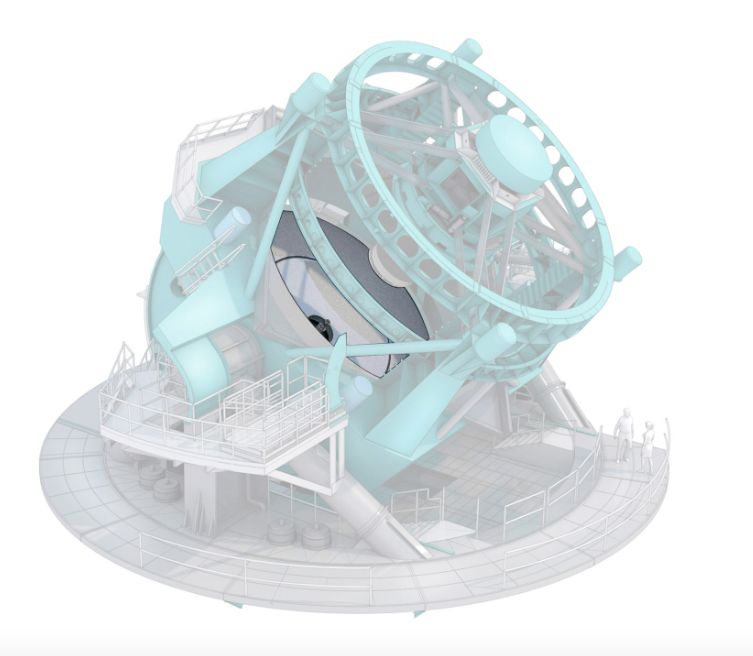
Main mirror
The 8.4-meter primary can gather enough light to see galaxies from 11 billion years ago, when the universe was less than one-quarter its current age.
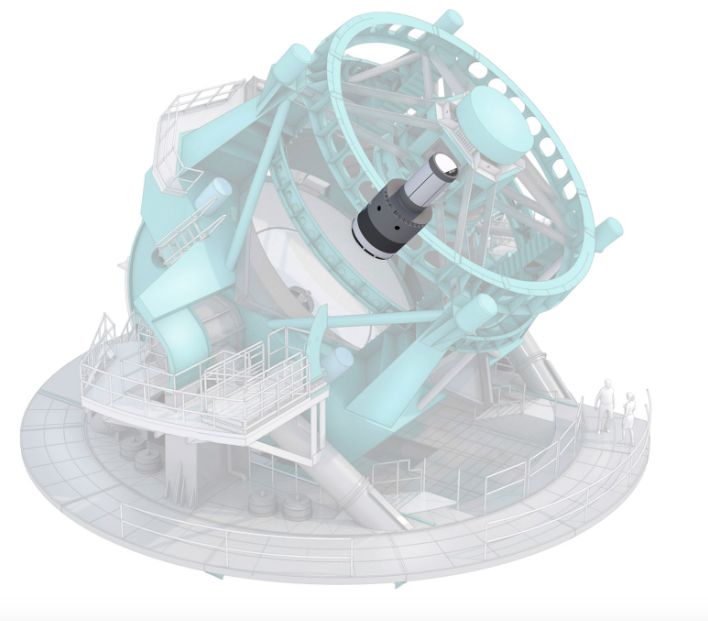
Camera
The world’s largest digital camera is also superfast, spitting out a 3200-megapixel image in less than 3 seconds following each 30-second exposure.
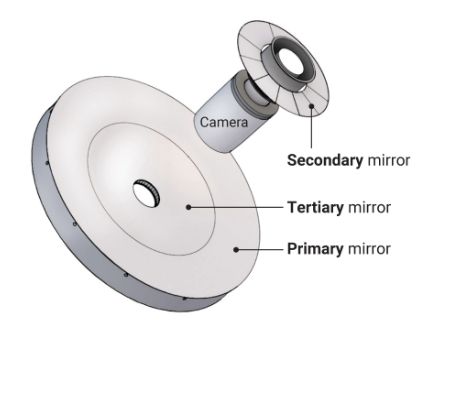
Two in one
The main mirror does double duty: A ring-shaped primary surrounds a tertiary mirror polished to a different shape.
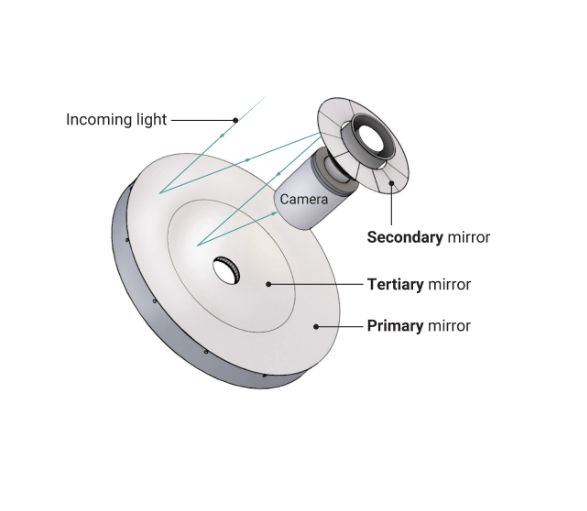
C. Bickel/Science
Picture perfect
This unique three-mirror optical system produces pin-sharp images with no distortion across the whole field of view.
The team called it the Dark Matter Telescope and scrambled to submit a proposal to the “decadal survey” for astrophysics—an exercise in which the community identifies priorities for U.S. funders. In 2001, the decadal survey rated the proposal highly and, realizing the telescope could address much more than dark matter, renamed it the Large Synoptic Survey Telescope. Nearly 2 decades later, as the telescope began to take shape on Cerro Pachón, it was renamed again after Vera C. Rubin, the astronomer who discovered dark matter by charting its effects on galaxy rotation, and who died in 2016. “And so it morphed into a real project,” Angel says.
By then the telescope’s proponents had another goal: probing dark energy, discovered in the 1990s. Dark energy is dark matter’s opposite, a repulsive force that is pushing the universe toward ever-faster rates of expansion, against the action of dark matter, whose gravity is trying to slow it down. Astronomers first spotted its effects in the motion of distant supernovas, in part by using Tyson’s first CCD camera on the Blanco telescope.
Sharp shooter
The camera is designed to capture huge quantities of data. In its first year, it will gather more optical data than all previous telescopes combined.
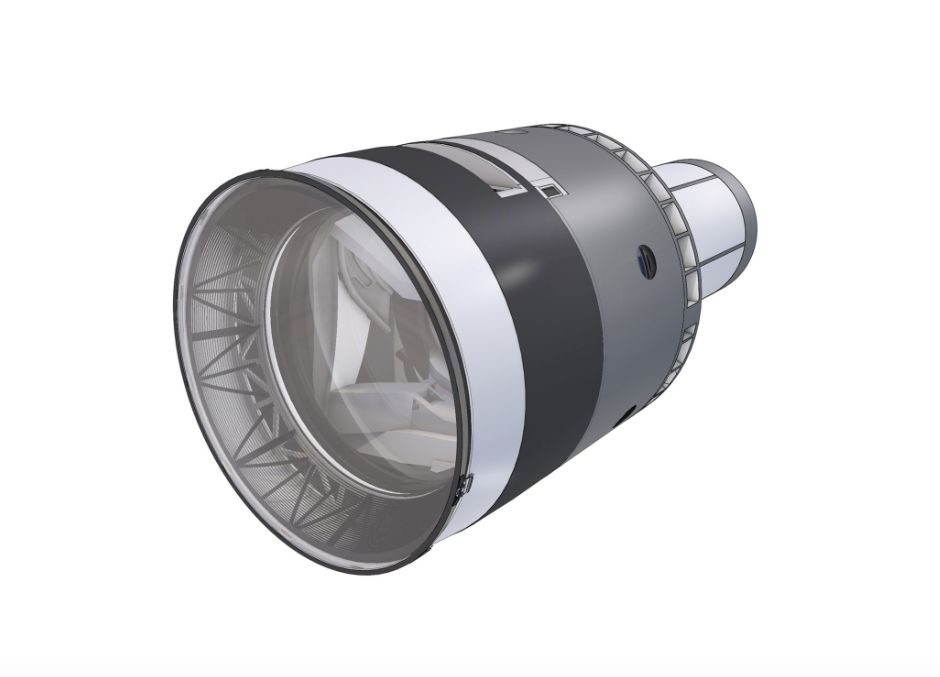
The 3-ton camera is the size of a car and will gather 20 terabytes of optical data each night.
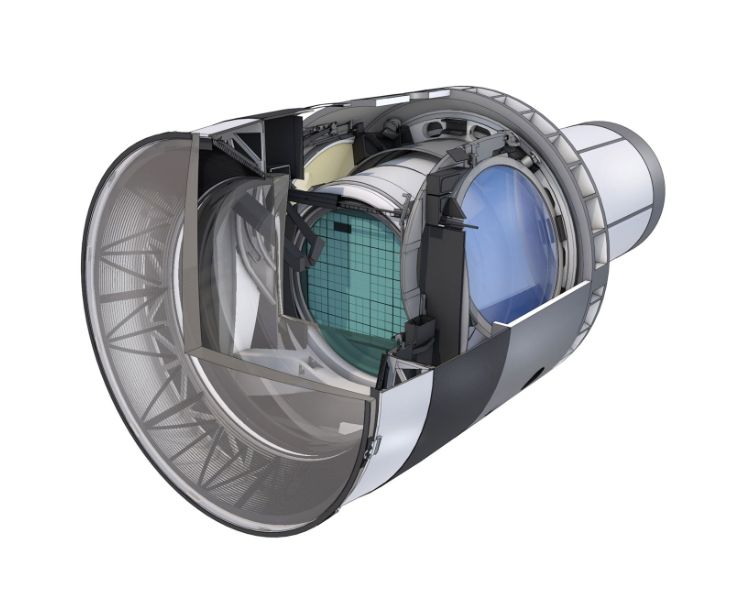
Deep freeze
All of the camera’s optics are enclosed in a cryostat chilled to –100°C to increase efficiency and reduce noise.
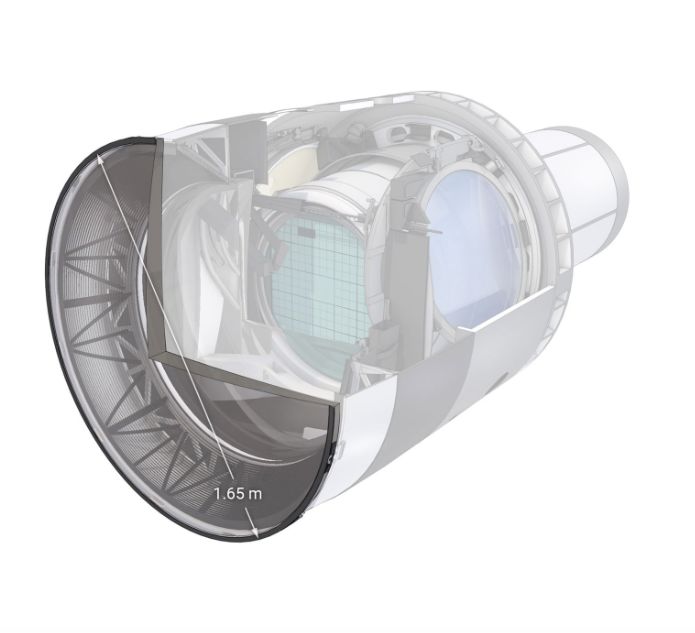
Lenses
The camera contains three lenses to focus light onto the sensor array. The first, at 1.65 meters across, is the largest ever built for astronomy.
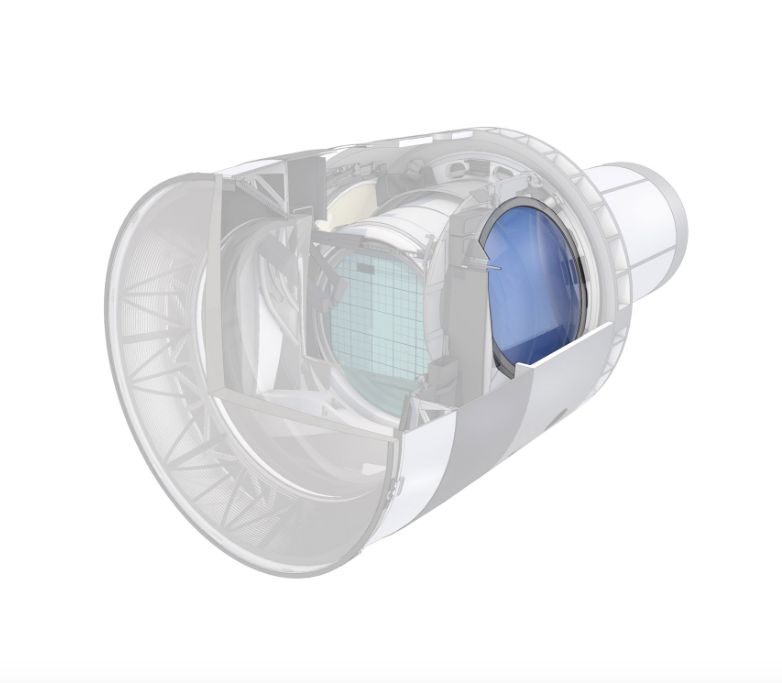
Filters
Color filters can be placed in front of the sensor array to restrict its vision to particular wavelengths. Infrared light, for example, highlights sources obscured by dust.
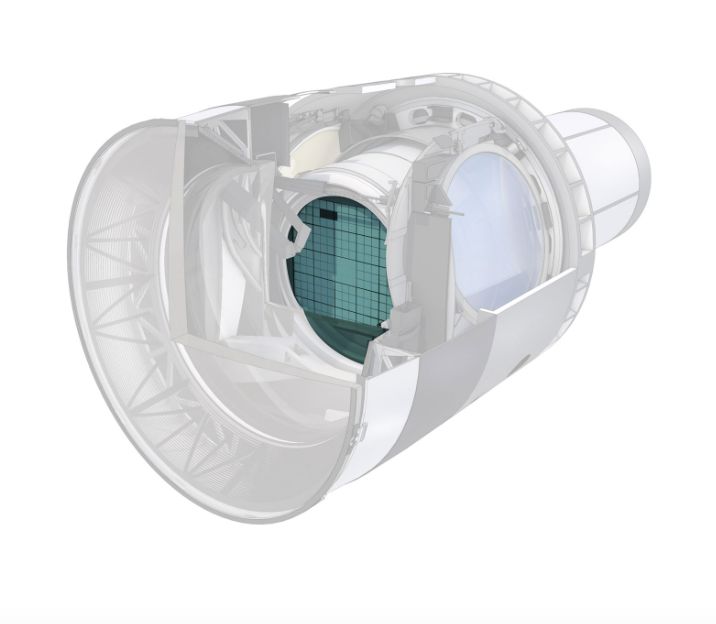
Focal plane
The 64-centimeter-wide focal plane will capture ultraviolet, visible, and near-infrared light on an array of 189 charge-coupled devices (CCDs).
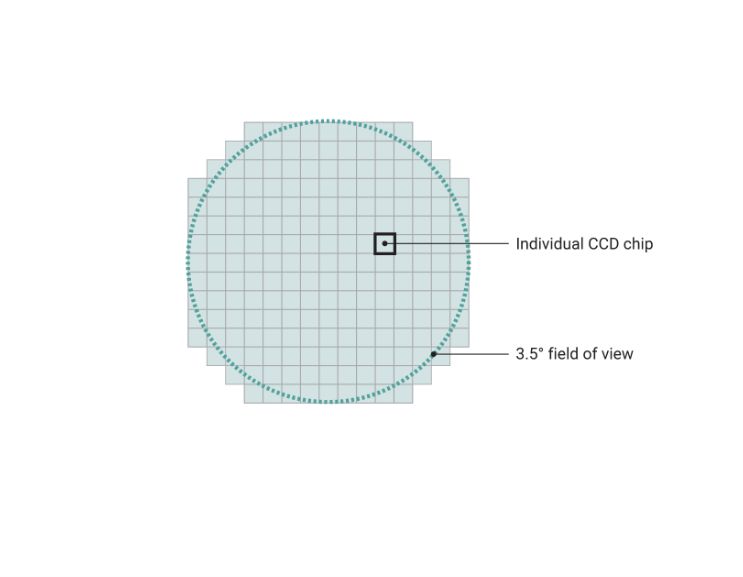
Sensor grid
Each of the array’s 189 CCD chips captures more than 16 megapixels. They are wired together for speed, able to read out an image in 2.4 seconds.
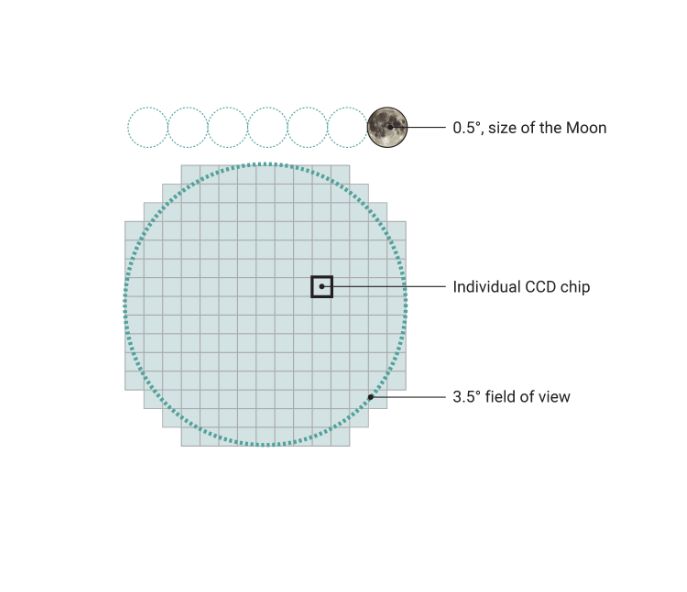
Wide eye
The sensor can take in a 3.5° field of view, an area on the sky that is the size of 45 full Moons.
C. Bickel/Science
Cosmologists want to know whether dark energy is steady—explained by an energy inherent to the vacuum of empty space—or has changed over time, which would point to a more exotic explanation. Most studies have found it to be constant. But earlier this year a survey by the Dark Energy Spectroscopic Instrument, on a telescope in Arizona, provided the first hints that dark energy may have varied over cosmic history—a suggestion cosmologists hope Rubin will confirm or refute.
Rubin’s main probe of dark energy is weak gravitational lensing. The distortion of galaxy shapes caused by intervening matter, both dark and normal, can’t be seen by inspecting individual images. It’s a subtle effect that can only be teased out statistically in large samples of galaxies. By analyzing the shapes of galaxies at various distances, researchers will map out the 3D distribution of the intervening matter to gauge the effects of dark energy at different epochs in cosmic history.
The Dark Energy Survey, a project that ran on the Blanco telescope from 2013 to 2019, gathered hundreds of thousands of galaxy images for weak lensing. Euclid, a European space telescope launched in 2023, is aiming for 1 billion. Rubin will detect 20 billion. “The sample size is so large that we’re not constrained by the usual type of error,” Tyson says.
The age of surveys
Automation and sensor technology have spawned many surveys, turning astronomers into data scientists. Rubin will perform the biggest, deepest survey yet.
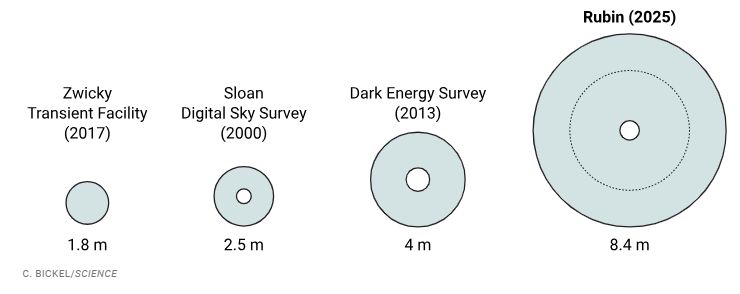
The maps will also hold lessons for researchers studying how galaxies have formed and evolved, by bringing a vast population of faint, dwarf galaxies into view. “What we understand about galaxy evolution comes mainly from bright objects,” says astrophysicist Sugata Kaviraj of the University of Hertfordshire. “Our knowledge comes from the tip of the iceberg.” Large galaxies like the Milky Way are thought to represent the late stage of galaxy evolution, the product of multiple mergers. By seeing the smaller galaxies at greater distances, merging and growing in earlier epochs of time, Rubin will show whether theorists are right, and also how this process affects galaxy shapes and rates of star formation.
Because most galaxies contain supermassive black holes at their centers, galaxy mergers should also lead to pairs of such behemoths slowly spiraling in toward each other over billions of years. The end stage is thought to produce rhythmic changes in brightness, for example if one of the black holes regularly crashes through the bright, hot disk of material surrounding the other, causing it to flare. But observers have yet to confirm such repeating events, which may be years or decades apart. “Rubin is going to do it much better than ever before, and that’s where a lot of the excitement will come,” says astrophysicist Niel Brandt of Pennsylvania State University.
While Rubin slowly builds that huge catalog of galaxies over its 10-year survey, other astronomers will be chasing transients from the firehose of alerts.
Within seconds of the shutter closing on each exposure, the image will travel along a newly laid fiber from the summit to NOIRLab’s facility in La Serena on the Chilean coast, and then along academic and commercial networks to the U.S. The SLAC center will generate transient alerts—on average 10,000 per image, for up to 1000 images every night—and dispatch them about 1 minute after they are observed.
From there, software developed by the astronomy community takes over. The raw alert stream doesn’t attempt to identify what the objects are. Instead, software systems known as alert brokers filter the alerts into categories, based on information in the alert and archival data, and prioritize some objects for urgent follow-up observations. Brokers “act as intelligent intermediaries between Rubin and the scientific community,” says Guillermo Cabrera-Vives, a computer scientist at the University of Concepción.
Most alerts will be for run-of-the-mill objects, such as variable stars and known asteroids in the Solar System. But some will be treasures: supernovae, flaring supermassive black holes, or interstellar comets sweeping past our Sun.
For high-priority events, other algorithms will automatically send out observing requests to robotic telescopes across the globe. These scopes could, for example, swivel to a freshly hatched supernova to record its spectrum and chart its rising brightness in the early hours, gleaning clues to what sort of star had exploded and why. “That really allows you to make progress scientifically because it’s the outer layers of the supernova that tell you the most about the star that exploded,” says astronomer Andy Howell of Las Cumbres Observatory, a network of 25 robotic telescopes. In the era of Rubin, some lucky astronomer may wake to find they’ve made a career-changing discovery, complete with follow-up data, all while they were sleeping.
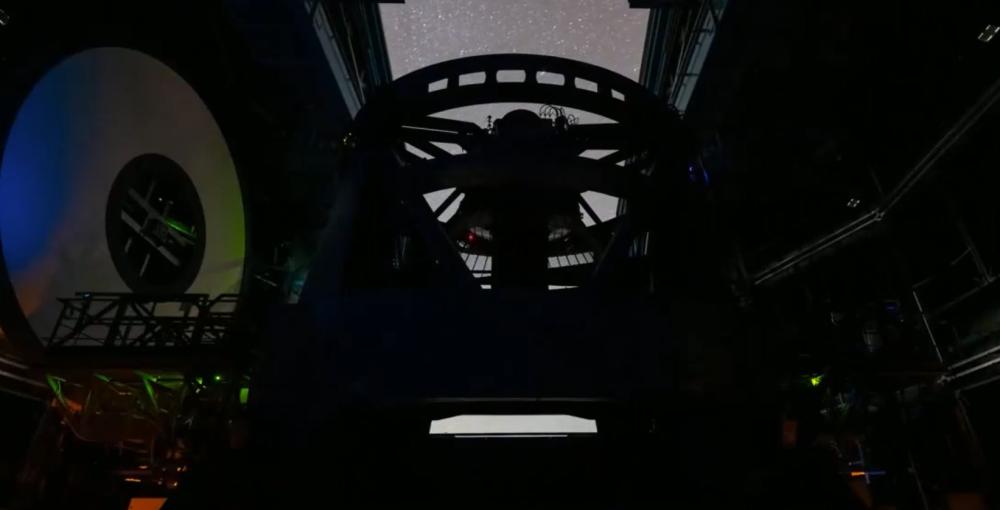
Rubin Observatory/NSF/DOE/NOIRLab/SLAC/AURA/H. Stockebrand
Harvesting the stars
All night long, Rubin will take 30-second exposures, with just 5 seconds between each snapshot. With up to 1000 images collected over three nights, the patchwork will cover the entire visible sky.
Controlling mind
An artificial intelligence system called a scheduler controls the telescope, telling it where to point. It follows instructions to avoid obstacles such as the Moon while accounting for weather, air turbulence, and sky brightness.
Rubin is expected to detect thousands of supernovae each night, in galaxies near and far. Astrophysicist Graham Smith of the University of Birmingham dreams of catching a much rarer event: a kilonova, the blast created by the merger of neutron stars, ultradense dead stars that didn’t quite have enough mass to collapse into a black hole. Capturing such a merger would be, in a real sense, a gold mine for astronomers, because kilonovae are thought to forge many heavy elements, including gold, by fusing smaller nuclei during the cataclysm.
In 2017, gravitational wave detectors sensed the ripple of a neutron star merger but couldn’t give an accurate location. It took astronomers 11 hours to find the kilonova and, by that time, they had missed the crucial rising phase of its brightness. If such a detection were to happen again, Rubin could be diverted from its nightly survey to devote its wide and sensitive vision to the search.
Smith hopes Rubin could get even luckier, if a kilonova goes off directly behind a galaxy or galaxy cluster, which can act as a gravitational lens. The result could be multiple images of the explosion, each appearing at a slightly different time. If Rubin can keep watching until the later images appear, astronomers might glimpse the very start of the blast, gaining new information about heavy element production plus clues to the strange state of matter that is thought to exist inside a neutron star. “The rising portion of a kilonova light curve is one of the key probes of some of the open questions” around neutron star mergers, Smith says. “We need to be ready to get lucky.”
Closer to Earth, Rubin will discover a trove of new Solar System objects. Meg Schwamb, a planetary scientist at Queen’s University Belfast, and her colleagues predict it will find 3.7 million main belt asteroids, 32,000 objects beyond Neptune, and 90,000 new near-Earth asteroids—including some that may threaten Earth. Depending on the type of object, that’s between two and 12 times the number currently known. “That’s just extraordinary, if you think how long people have been looking for these things and then just one telescope is going to produce that,” she says.
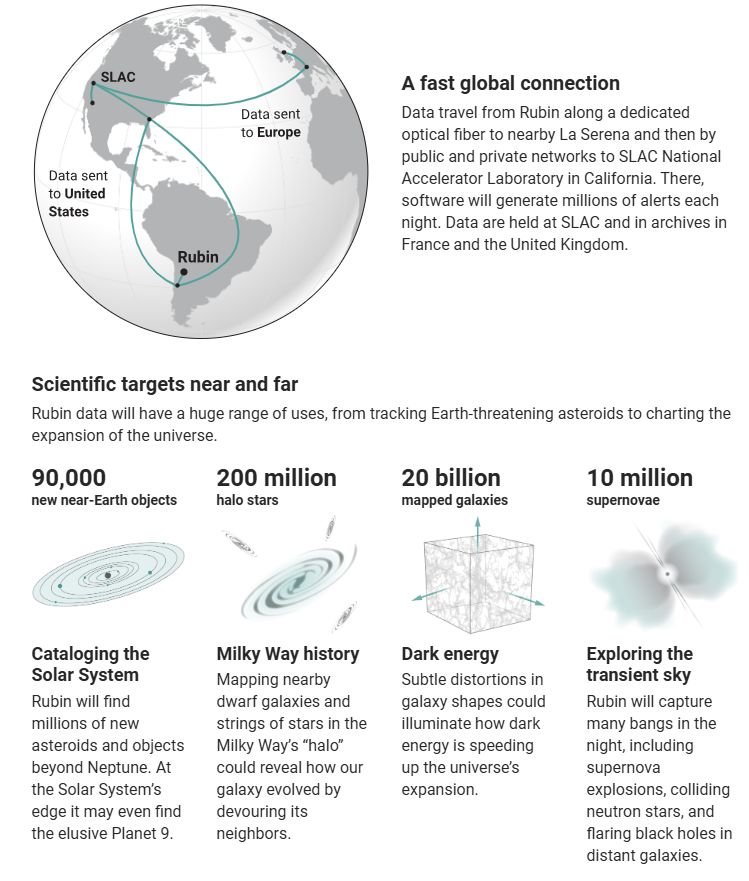
C. Bickel/Science
Konstantin Batygin, a planetary scientist at the California Institute of Technology (Caltech), has his sights set on one particular Solar System object. In 2016, he and Caltech astronomer Mike Brown proposed that the peculiar orbital clustering of a handful of icy objects far beyond Neptune reflected the influence of an unseen, similarly distant planet bigger than Earth. Telescopes have failed to locate Planet 9 thus far, but Rubin is the perfect tool to find it—if its orbit falls within view of the observatory’s southerly vantage. “It’s either there or not,” Batygin says. “We can’t say definitely which way it’s going to go.”
Regardless, Batygin expects Rubin to find a wealth of distant objects out of the plane in which the planets orbit—a whole new population that has barely been studied. “The Solar System still has a lot of tricks up its sleeves,” he says. In the very outermost edges of the Solar System, he hopes Rubin might find a faint record of the Sun’s birth. Most stars are born in clusters, from a giant cloud of gas. The stars quickly disperse, but their early gravitational jostling could have left a chaotic imprint on the orbits of the Solar System’s most distant objects. “A lot of that architecture is set during the first few million years of the Sun’s lifetime because clusters don’t live very long,” Batygin says.
A few of the objects Rubin turns up may even be from other planetary systems. Since 2017, astronomers have detected two lumps of rock zipping through the Solar System too fast to be gravitationally bound to the Sun. It’s not known what knocked them away from their home—perhaps another star passing close by—but finding more and studying their chemical composition could shed light on the makeup of other planetary systems. “I want to know how the rest of the galaxy makes planets,” Schwamb says. According to a paper posted to the arXiv preprint server in February, Rubin’s 10-year survey may spot as many as 50 interstellar visitors.
For the team on Cerro Pachón, most of whom are astronomers as well as telescope builders, all that is in the future. But they caught their first glimpse of it in mid-April, 10 years after construction started, when light was first channeled all the way through the telescope and camera. Only a small crew can stay overnight to operate the telescope, so most of the staff were bussed down the mountain at sunset to the NOIRLab base in La Serena, 2 hours away. There they gathered in a conference room, linked via Zoom to the mountaintop control room, to await the first test image.
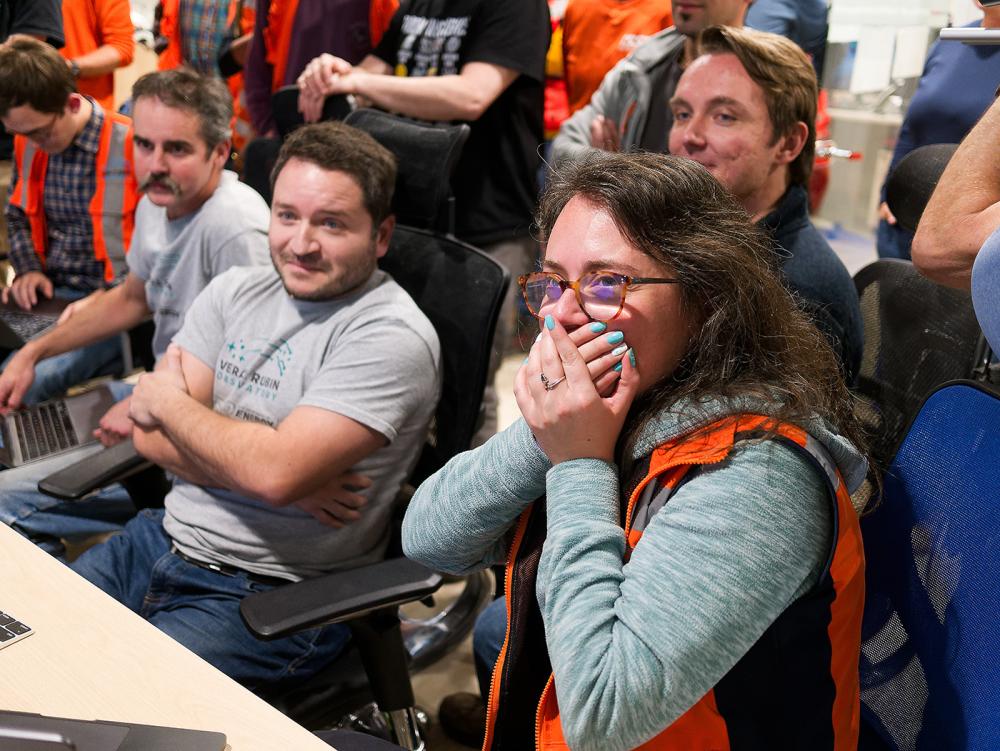
In April, astronomers in the Rubin observatory’s control room reacted to seeing the telescope’s first image.W. O’Mullane/Rubin Observatory/NOIRlab/SLAC/DOE/NSF/Aura
First, they saw the control room staff go crazy, shouting and jumping for joy. A seemingly endless 10 seconds later, an image popped onto their screens, and the scenes of jubilation were repeated at sea level. Afterward, there was pizza and beer. “I think they had a lot more fun,” Sandrine Thomas says of the crowd in La Serena. As deputy director for construction, she had been at the summit, where beer is banned and pizza can’t be delivered.
The image looked strangely like a plate of doughnuts because the camera was slightly misaligned with the focal plane of the telescope, spreading every point of starlight into a ring. It took only a couple of adjustments to reach a pin-sharp image, a testament to the months of preparation the team had done for this moment. “It was such a moving time,” Thomas says. Many astronomers may feel equally moved when the cosmic movie starts rolling.
doi: 10.1126/science.z3ptiml
Daniel Clery has been reporting for Science from Europe since 1993. With a degree in theoretical physics from York University in the United Kingdom and previous experience at magazines including Physics World and New Scientist, Daniel writes about physics, astronomy, space science, energy, and European science policy. Based in the town of Woodbridge in Suffolk, U.K., Clery has also written for Popular Science, the Bulletin of the Atomic Scientists, Huffington Post, the Financial Times, Physics World, The European, and Cosmos. In June 2013 he published A Piece of the Sun: The Quest for Fusion Energy.
Science has been at the center of important scientific discovery since its founding in 1880—with seed money from Thomas Edison. Today, Science continues to publish the very best in research across the sciences, with articles that consistently rank among the most cited in the world. In the last half century alone, Science published:
- The entire human genome for the first time
- Never-before seen images of the Martian surface
- The first studies tying AIDS to human immunodeficiency virus
A trailblazer in online publishing as well, the Science family of publications has grown to include online journals Science Translational Medicine, Science Signaling, Science Immunology, Science Robotics and the open access journal Science Advances.
Science Translational Medicine is an essential platform for peer-reviewed, multidisciplinary research driving the latest medical advances. Science Signaling offers original review articles, protocols and teaching resources for the growing field of cellular signal transduction. Science Immunology publishes basic, translational and clinical research specifically about immunology across all organisms and model systems, including humans. Science Robotics covers new developments in robotics and related fields, with a dual focus on the science of robotics as well as introducing researchers more broadly to how robots can be used to accelerate scientific study. Science Advances represents the next generation of online publishing, with rapid publication of significant, full-length research that is available free to readers.
The Science family of journals is published by the American Association for the Advancement of Science (AAAS), the world’s oldest and largest general science organization. The nonprofit AAAS serves 10 million people through primary memberships and affiliations with some 262 scientific societies and academies.
A voice for science and scientists everywhere, AAAS fulfills its mission to “advance science and serve society” by communicating the value of science to the public, helping governments formulate science policy, promoting advancements in science education and diversity, and helping scientists develop their careers.
Go from Science follower to insider
You’ve followed posts on the latest science breakthroughs, research, and news. Now, get all the details you’ve been missing by becoming a AAAS Member and starting a subscription to Science. Join today at the Silver Level or above for your one-year subscription to Science and our exclusive tote.
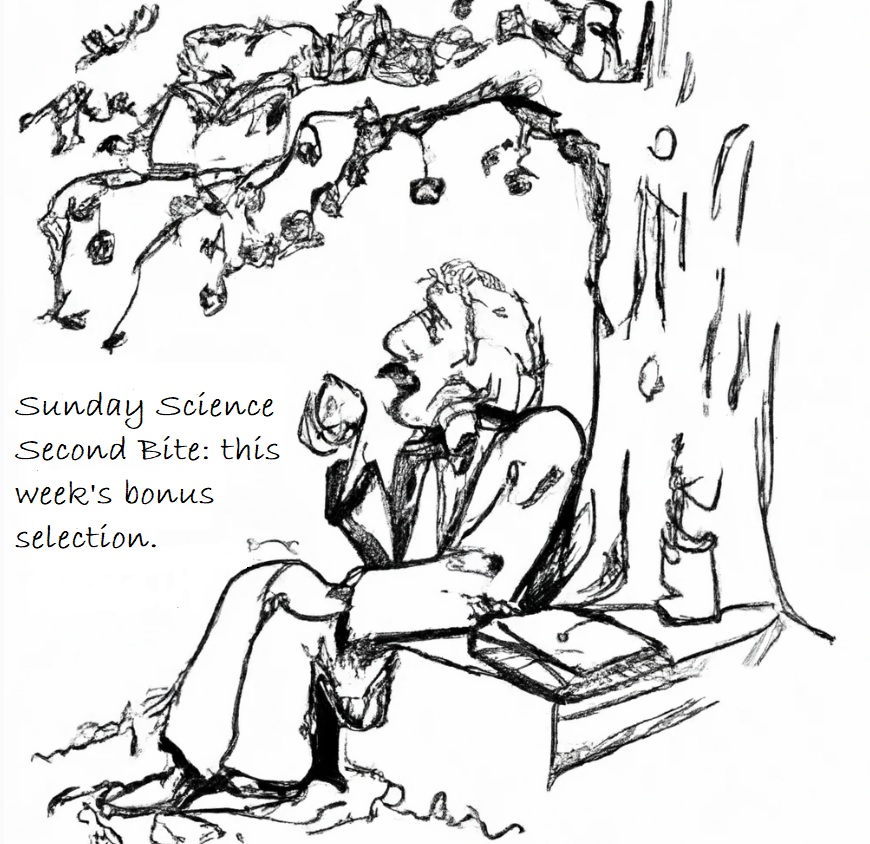
So Many Moving Pieces
Bill McKibben
The Crucial Years
Trying to understand the planet and its politics on the longest day
June 20, 2025
